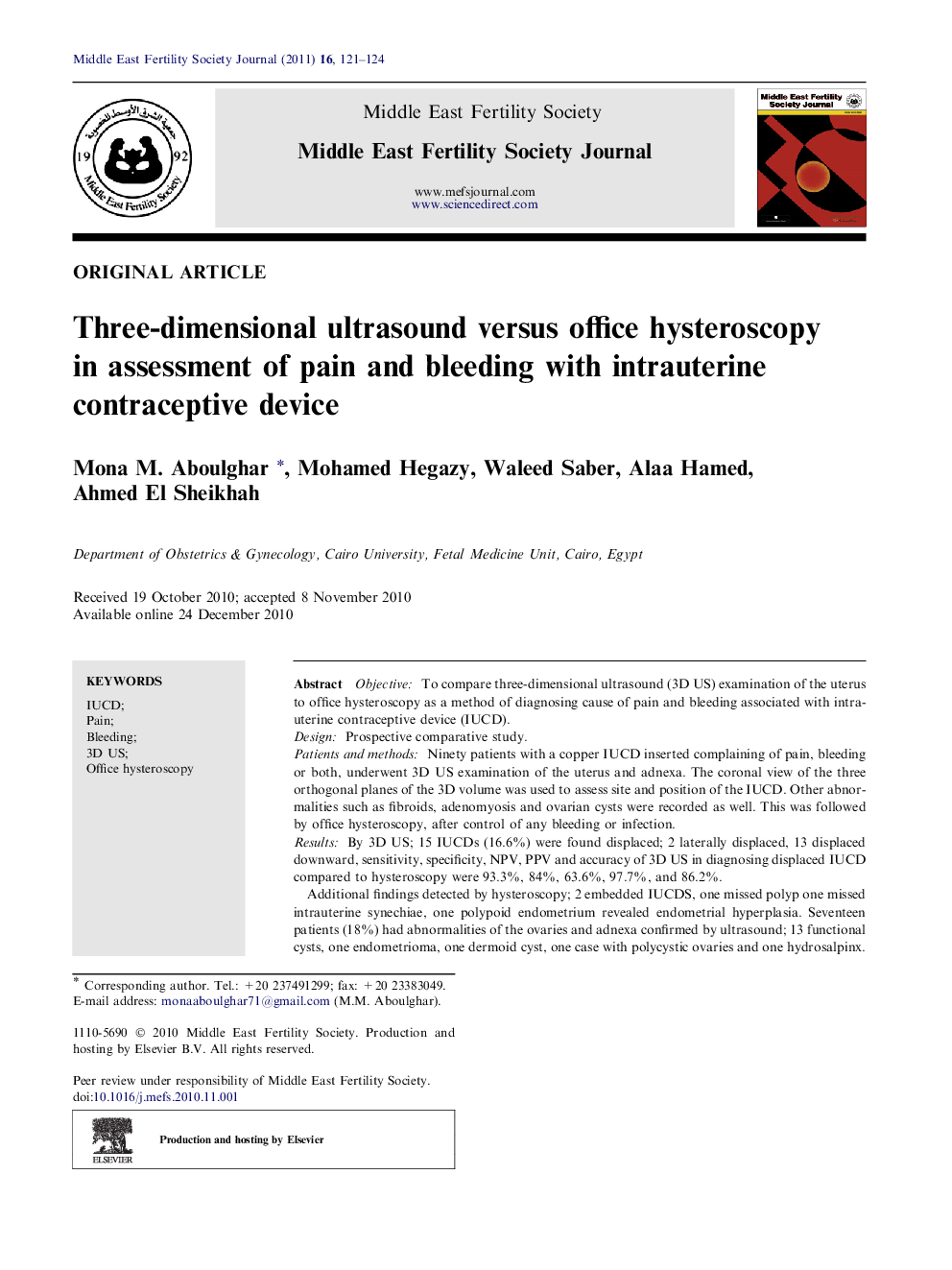| Article ID | Journal | Published Year | Pages | File Type |
|---|---|---|---|---|
| 3966199 | Middle East Fertility Society Journal | 2011 | 4 Pages |
ObjectiveTo compare three-dimensional ultrasound (3D US) examination of the uterus to office hysteroscopy as a method of diagnosing cause of pain and bleeding associated with intrauterine contraceptive device (IUCD).DesignProspective comparative study.Patients and methodsNinety patients with a copper IUCD inserted complaining of pain, bleeding or both, underwent 3D US examination of the uterus and adnexa. The coronal view of the three orthogonal planes of the 3D volume was used to assess site and position of the IUCD. Other abnormalities such as fibroids, adenomyosis and ovarian cysts were recorded as well. This was followed by office hysteroscopy, after control of any bleeding or infection.ResultsBy 3D US; 15 IUCDs (16.6%) were found displaced; 2 laterally displaced, 13 displaced downward, sensitivity, specificity, NPV, PPV and accuracy of 3D US in diagnosing displaced IUCD compared to hysteroscopy were 93.3%, 84%, 63.6%, 97.7%, and 86.2%.Additional findings detected by hysteroscopy; 2 embedded IUCDS, one missed polyp one missed intrauterine synechiae, one polypoid endometrium revealed endometrial hyperplasia. Seventeen patients (18%) had abnormalities of the ovaries and adnexa confirmed by ultrasound; 13 functional cysts, one endometrioma, one dermoid cyst, one case with polycystic ovaries and one hydrosalpinx.ConclusionsPatients with abnormal bleeding and pain with IUCD have frequent abnormally positioned IUCD and associated ovarian pathology. 3D US has high diagnostic accuracy and should be the first line of investigation. Office hysteroscopy should be performed only in suspected embedded IUCD or other endometrial abnormality.
